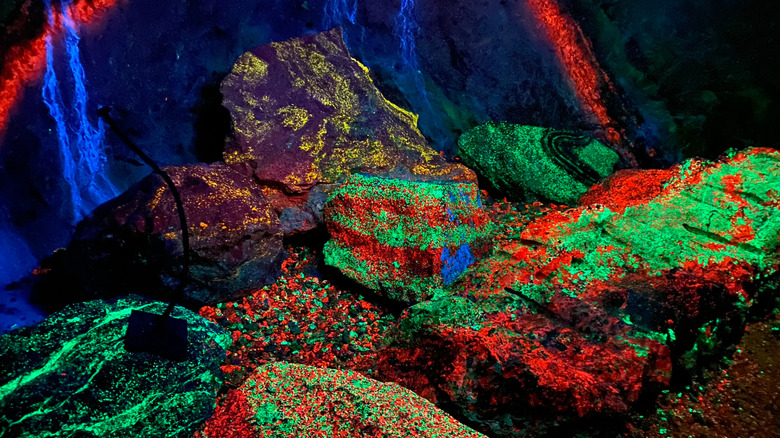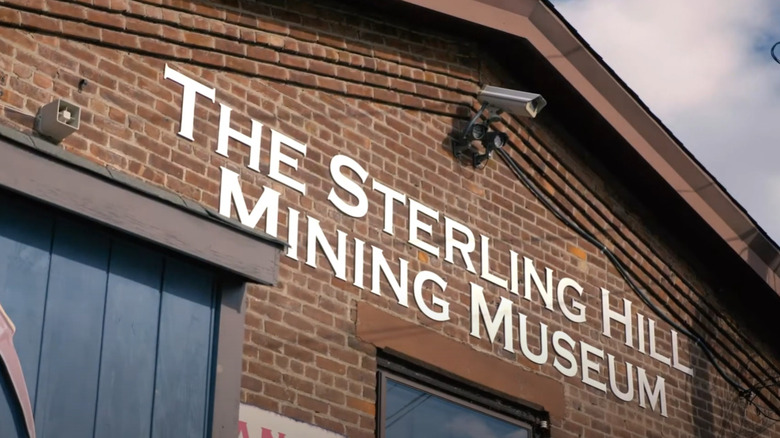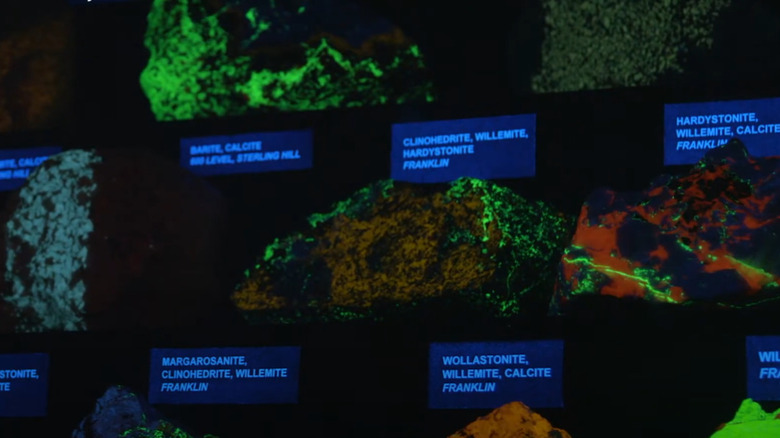'World-Famous Fluorescent Rocks' Glow At One Of New Jersey's Most Underrated Interactive Museums
Located about an hour away from the infamous Newark International Airport in New Jersey, travelers will find a unique respite from the bustling city in the form a historical, one-of-a-kind site, tucked away among the state's lakes and waterways. The Sterling Hill Mining Museum in Ogdensburg is home to an underrated and unusual (yet delightfully intriguing) display of historic mining materials, specimens, and equipment. But the most famous exhibit of them all is the world's largest public display of fluorescent rock samples. Yes, they are naturally fluorescent, and yes, that means they glow in the dark under ultraviolet light!
The Sterling Hill Mine was a zinc mineral mining operation for centuries before it was converted into a museum in the early 1990s by two local history enthusiasts. Paying homage to the region's vital mining industry, the museum today chronicles the history of mining in New Jersey, gives insight into the process of mining, and shows off the stunningly beautiful minerals located in the mine, both in their raw form as well as in manufactured forms like in glassware. Gem hounds can even try their luck at mineral collecting and sluicing, so you, too, can get your hands on some fluorescent zinc ore at this highly interactive museum. A site on the National Register of Historic Places, the Sterling Hill Mine welcomes tens of thousands of visitors a year. Get up close and personal with the mining heritage of western New Jersey, and during your in-depth visit, see everything from meteorites to rare gemstones and even dinosaur bones.
Everything you need to know about visiting Sterling Hill Mining Museum
The Sterling Hill Mining Museum isn't just a collection of pretty, glow-in-the-dark rocks — it gives visitors an in-depth exploration of the mining industry in and around New Jersey across several rooms of exhibitions. Visitors get to embody the journey of the miners, exploring the tunnel that miners traversed to get to their positions, visiting the locker rooms that many miners started their day in, and extensively learning about the processes of mining. Tours of the museum also include the Warren Museum of Fluorescence, which displays rows upon rows of neon colored minerals (over 700 specimens to be exact) for visitors to take in. The Zobel Hall Museum also offers exhibits on the miners and the other interesting objects located down in the mines, like dinosaur artifacts. In order to visit, all curious gem enthusiasts must take a guided tour. At $15 per person (at the time of writing) with discounted rates for seniors and children under 13, this underrated museum is also wallet friendly. No reservations are needed; simply show up and buy your ticket on site.
Previous visitors do suggest that this is as an activity best suited for older children, since the tour can run as long as two hours. The site can get really popular during certain times of the day, so be prepared for larger tour groups and potential crowds as well. The mines can also be cold, no matter the time of year, so bring an extra layer with you during your visit. All this to say, what visitors will take away from this visually stunning and information-packed experience will be an extensive and thorough insight into the mining world, its repercussions, and, of course, the rare minerals located within the mines.
A brief history of the Sterling Hill Mine
Like the Alaskan ghost towns borne from a copper ore boom, Sterling Hill and surrounding Ogdensburg's identity and history is inextricably linked with the minerals harvested from these mines. Nicknamed the "Fluorescent Mineral Capital of the World," the site was quickly recognized as a treasure trove of zinc, iron, and copper as early as the 17th century. This unique array of chemical compounds is what causes the diversity of color in the mineral's fluorescence in displays at the museum today. By 1836, full-scale mining operations were in effect, and the mine housing the museum was in operation from those times until 1986. The mine had 35 miles of tunnels and reached depths of over 2,600 feet. However in the 1980s, the mining operations were no longer profitable, but brothers Richard and Robert Hauck understood the mine's importance to the community and saved an upper level tunnel and some of its buildings to memorialize as a museum.
There's no doubt that Sterling Hill Mine is packed with history, so much so that it even has its own ghost lore attached to it. The museum's mission seeks to educate visitors about the true nature of mining from a historical, environmental, and economic prospective. New Jersey is filled with hidden and underrated gems, and Sterling Hill is one of them (and is literally filled with gems). With interactive "mining" activities, a detailed tour, and a brilliant display of fluorescent minerals, the museum is an underrated New Jersey site where you can take away some valuable lessons on history — and maybe a glowing rock or two.


